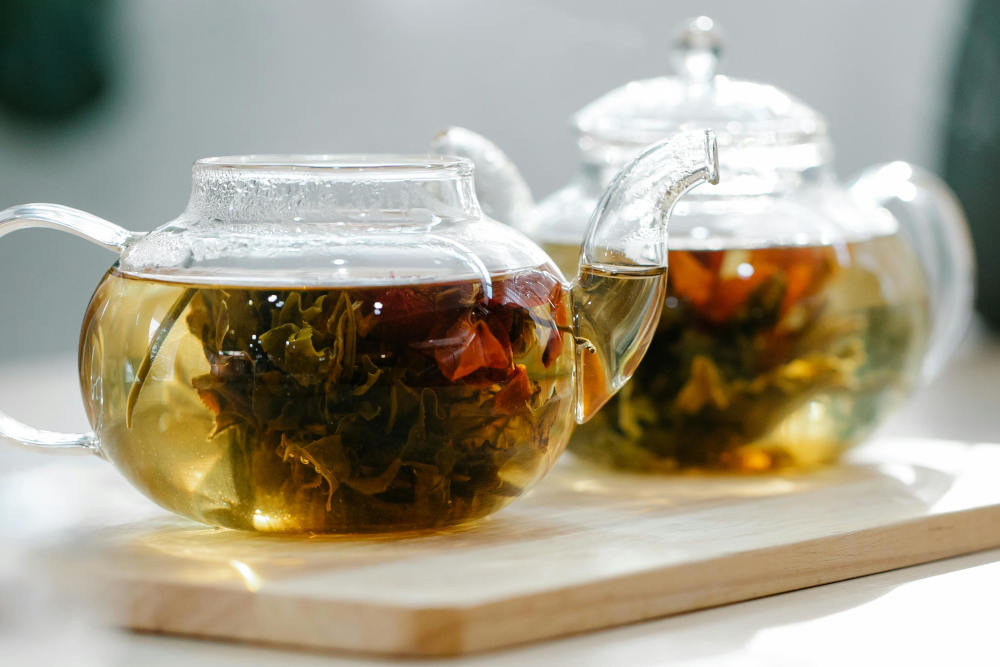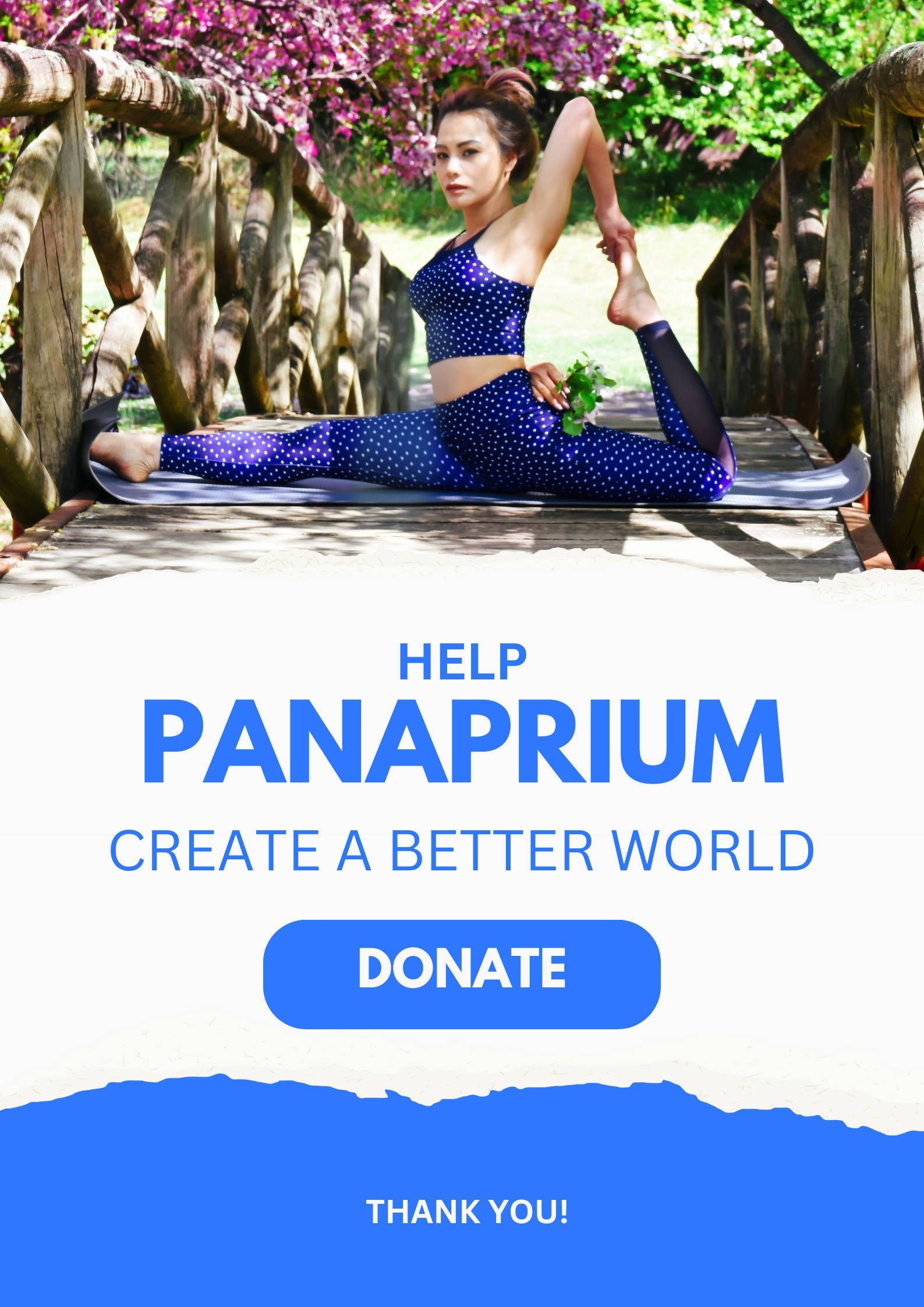
Les tisanes sont depuis longtemps reconnues pour leurs vertus curatives naturelles, favorisant de nombreux bienfaits, de la digestion à la relaxation. Cependant, si elles sont généralement sans danger, mélanger certaines plantes peut entraîner des interactions indésirables , réduire leur efficacité, voire être nocif. Que vous soyez herboriste, amateur de thé ou débutant en phytothérapie, il est essentiel de comprendre quelles plantes ne doivent pas être combinées.
Cet article explore les combinaisons de plantes à éviter , la science derrière les risques et comment profiter des tisanes en toute sécurité.
Panaprium est indépendant et pris en charge par les lecteurs. Si vous achetez quelque chose via notre lien, nous pouvons gagner une commission. Si vous le pouvez, veuillez nous soutenir sur une base mensuelle. La mise en place prend moins d'une minute et vous aurez un impact important chaque mois. Merci!
Pourquoi certaines herbes ne devraient pas être combinées
Les plantes contiennent de puissants composés actifs qui peuvent interagir entre elles, ou avec des médicaments. Consommées ensemble dans une tisane, ces interactions peuvent :
-
Amplifier ou réduire l’effet d’une ou des deux herbes.
-
Provoquer des effets secondaires indésirables (tels que des nausées, des étourdissements ou une toxicité hépatique).
-
Créer des déséquilibres dans le corps (comme une surstimulation du système nerveux ou une perturbation de la digestion).
-
Interférer avec des médicaments comme les anticoagulants, les antidépresseurs ou les médicaments contre l’hypertension.
Ce n’est pas parce qu’un produit est naturel qu’il est automatiquement sans danger lorsqu’il est combiné.
1. Millepertuis et autres plantes qui influencent l'humeur
Éviter de mélanger avec :
-
Valériane
-
Kava
-
Passiflore
-
5-HTP
-
Ginseng
Pourquoi : Le millepertuis est connu pour ses effets antidépresseurs en agissant sur les niveaux de sérotonine. Associé à d'autres plantes agissant également sur le système nerveux central (SNC), il peut provoquer un syndrome sérotoninergique , une sédation excessive ou une surstimulation.
Risques : Confusion, contractions musculaires, transpiration, hypertension artérielle et agitation.
2. Racine de réglisse + herbes diurétiques ou pour la tension artérielle
Éviter de mélanger avec :
-
Pissenlit
-
Prêle
-
Aubépine
-
Uva Ursi
-
Ortie
Pourquoi : La racine de réglisse peut augmenter la tension artérielle et retenir le sodium dans l'organisme. Son association avec des plantes diurétiques ou cardiovasculaires peut entraîner des déséquilibres électrolytiques , une rétention d'eau ou une hypertension artérielle dangereuse.
Risques : Maux de tête, gonflement, fatigue, déplétion potassique, arythmie.
3. Ginseng + herbes contenant de la caféine ou stimulantes
Éviter de mélanger avec :
-
Guarana
-
Yerba maté
-
Thé vert ou noir
-
Éphédra (ma huang)
Pourquoi : Le ginseng est un stimulant naturel. Associé à d’autres plantes énergisantes, il peut surstimuler le système nerveux , accélérer le rythme cardiaque et augmenter la tension artérielle.
Risques : Insomnie, anxiété, palpitations cardiaques, nervosité.
4. Kava + herbes sédatives ou dépressives du SNC
Éviter de mélanger avec :
-
Valériane
-
Houblon
-
Passiflore
-
Calotte
-
Camomille (en grande quantité)
Pourquoi : Le kava est un puissant relaxant qui agit sur les récepteurs GABA du cerveau. Son association avec d'autres sédatifs peut entraîner une somnolence excessive , un dysfonctionnement moteur ou une fatigue hépatique.
Risques : Toxicité hépatique, troubles de la coordination, troubles du sommeil.
5. Gingembre + herbes anticoagulantes
Éviter de mélanger avec :
-
Ail
-
Ginkgo biloba
-
Curcuma
-
écorce de saule
-
Grande camomille
Pourquoi : Le gingembre a de légères propriétés anticoagulantes. Associé à d'autres plantes anticoagulantes, son effet peut devenir trop fort, augmentant le risque d' ecchymoses ou de saignements , surtout avant une intervention chirurgicale ou en cas de prise d'anticoagulants.
Risques : Saignements de nez, règles abondantes, ecchymoses faciles.
6. Séné + autres herbes laxatives ou amères
Éviter de mélanger avec :
-
Cascara sacrée
-
Aloe vera (latex)
-
Racine de rhubarbe
-
Nerprun
-
Racine de pissenlit (en grande quantité)
Pourquoi : Le séné est un puissant laxatif stimulant. Son association avec d'autres laxatifs ou amers peut provoquer diarrhée, déshydratation et déséquilibre électrolytique .
Risques : Crampes, déshydratation, dépendance aux laxatifs, faible taux de potassium.
7. Échinacée + Plantes immunostimulantes (à long terme)
Éviter de mélanger à long terme avec :
-
Astragale
-
Griffe de chat
-
Sureau (à fortes doses)
Pourquoi : Bien qu’une utilisation à court terme puisse améliorer la fonction immunitaire, la combinaison d’immunostimulants sur de longues périodes peut surstimuler le système immunitaire et potentiellement déclencher des réponses auto-immunes chez les personnes sensibles.
Risques : Poussées auto-immunes, inflammation, fatigue.
8. Chardon-Marie + Plantes détoxifiantes ou hépatiques
Éviter de mélanger avec :
-
Racine de pissenlit
-
Racine de bardane
-
Quai jaune
-
raisin de l'Oregon
Pourquoi : Le chardon-Marie favorise la détoxification du foie, mais trop d’herbes stimulant le foie prises ensemble peuvent surcharger le foie ou altérer le métabolisme des médicaments .
Risques : Nausées, fluctuation des enzymes hépatiques, efficacité réduite du médicament.
9. Menthe poivrée + herbes déclenchant le reflux acide
Éviter de mélanger avec :
-
Réglisse (si vous utilisez la forme sans DGL)
-
Écorces d'agrumes
-
Gingembre (pour certaines personnes)
Pourquoi : La menthe poivrée détend le sphincter œsophagien inférieur, ce qui peut aggraver les symptômes du reflux acide ou du RGO , en particulier lorsqu'elle est associée à d'autres herbes provoquant le reflux.
Risques : Brûlures d’estomac, indigestion, maux d’estomac.
10. Écorce de saule + toute herbe ayant une action anticoagulante ou anti-inflammatoire
Éviter de mélanger avec :
-
Curcuma
-
Ail
-
Ginkgo
-
Gingembre
-
Reine des prés
Pourquoi : L’écorce de saule est une source naturelle de salicine (comme l’aspirine). Son association avec d’autres plantes anti-inflammatoires ou anticoagulantes augmente le risque de saignement et d’irritation gastrique .
Risques : Ulcères gastriques, cicatrisation lente, ecchymoses faciles.
Combinaisons de tisanes sûres et efficaces
Bien que certaines combinaisons soient risquées, de nombreux mélanges de plantes se marient à merveille . Voici quelques exemples d'associations sûres et efficaces :
| But | Combinaisons sûres |
|---|---|
| Aide au sommeil | Camomille + Lavande + Mélisse |
| Renforcement immunitaire | Échinacée (court terme) + Sureau + Gingembre |
| Soutien digestif | Fenouil + Menthe poivrée + Camomille |
| Anti-inflammatoire | Curcuma + Gingembre + Citronnelle |
| Soulagement du stress | Ashwagandha + Basilic sacré + Réglisse (court terme) |
Conseils pour mélanger les herbes en toute sécurité
-
Recherchez chaque herbe en profondeur
Comprendre comment chaque herbe affecte le corps et avec quels médicaments elle peut interagir. -
Limite de 2 à 3 herbes par mélange
Commencez avec un petit nombre d’herbes pour réduire le risque d’interactions. -
Évitez de mélanger des herbes ayant une puissance ou une action similaire
Par exemple, ne mélangez pas plusieurs sédatifs puissants ou anticoagulants. -
Utilisez des conseils professionnels
Consultez un herboriste qualifié ou un professionnel de la santé, surtout si vous êtes enceinte, si vous prenez des médicaments ou si vous souffrez d’une maladie chronique. -
Commencez par de faibles doses
Même les plantes sans danger peuvent provoquer des réactions chez les personnes sensibles. Testez toujours une petite quantité au préalable.
Conclusion
Les tisanes sont de puissants outils de guérison, mais toutes les plantes ne se marient pas bien . Tout comme pour les médicaments, combiner certaines plantes sans connaissances préalables peut entraîner des résultats inattendus, voire dangereux. En évitant les associations risquées décrites ci-dessus et en adoptant des pratiques de mélange sûres, vous pourrez profiter pleinement des bienfaits des tisanes, sans les effets secondaires indésirables.
En cas de doute, moins c'est plus. Respectez le pouvoir des plantes.
Références
-
Base de données complète sur les médecines naturelles.
-
Centre national de santé complémentaire et intégrative (NCCIH) – https://nccih.nih.gov
-
Upton, R. (éd.). (2010). American Herbal Pharmacopoeia
-
Mills, S., & Bone, K. (2013). Principes et pratique de la phytothérapie .
-
Blumenthal, M. (éd.). (2003). Le guide clinique ABC des plantes médicinales .
Cet article vous a-t-il été utile ? S'il vous plaît dites-nous ce que vous avez aimé ou n'avez pas aimé dans les commentaires ci-dessous.
About the Author: Alex Assoune
Contre Quoi Nous Luttons
Les groupes multinationaux surproduisent des produits bon marché dans les pays les plus pauvres.
Des usines de production où les conditions s’apparentent à celles d’ateliers clandestins et qui sous-payent les travailleurs.
Des conglomérats médiatiques faisant la promotion de produits non éthiques et non durables.
De mauvais acteurs encourageant la surconsommation par un comportement inconscient.
- - - -
Heureusement, nous avons nos supporters, dont vous.
Panaprium est financé par des lecteurs comme vous qui souhaitent nous rejoindre dans notre mission visant à rendre le monde entièrement respectueux de l'environnement.
Si vous le pouvez, veuillez nous soutenir sur une base mensuelle. Cela prend moins d'une minute et vous aurez un impact important chaque mois. Merci.































0 commentaire